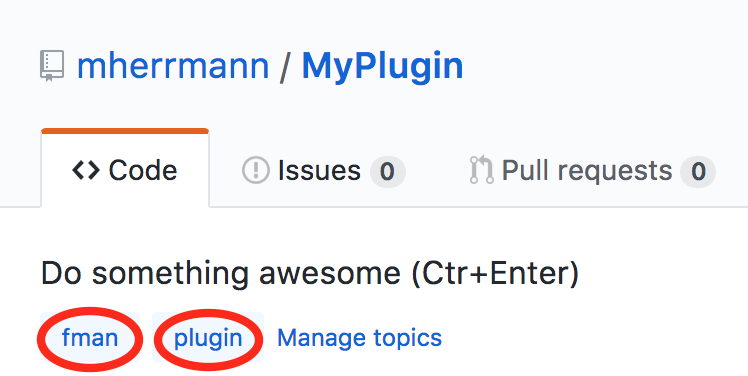Getting Started
Plugins
- List of plugins
- Installing plugins
- Writing plugins
- Architecture
- Sharing plugins
- Core plugin
- Caveats
- API
Configuration
Sharing plugins
Once you've written a plugin, you can make it accessible to others via
GitHub. Just create a
repository with your plugin's files there and add the topics
fman and plugin. For example:

Your plugin is displayed in fman's "Install plugins" command as follows:

You can see that the description of your repository on GitHub is displayed
inside fman. Use this to your advantage! Instead of the wordy description
"fman plugin for doing XYZ", use "Do XYZ". On top of that, it's great when
the description already explains how the plugin can be used. The above
example does this by mentioning the plugin's main keyboard shortcut
Ctr+Enter in the description.
Releases
GitHub lets you tag any version of your repository as a release. Before fman installs a plugin, it first checks if such a release exists. If yes, it downloads it. Otherwise, fman simply uses the latest commit.
You don't have to use releases if you don't want to. But they do have the following advantage: When a release of your plugin exists, you can commit potentially breaking changes to the repository. fman always installs the release version so your users will not be affected. Once you've deemed the accrued changes stable enough, you can draft a new release for fman to use.